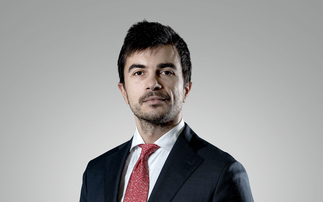Partner Insight: Global assets under management (AUM) will almost double to $145.4trn by 2025, with passive funds expected to rapidly boost their market share to around 25%, according to a recent report from PwC.
The paper, entitled Asset & Wealth Management Revolution: Embracing Exponential Change, contends that change in the fund management industry is now accelerating at an exponential rate. And as low-cost products such as ETFs gain market share "firms must have a view of the landscape of tomorrow, a clear strategy and know their differentiating capabilities".
So what accounts for this fast uptick in passive AUM? One explanation is the cost efficiency of the passive investment approach, says Tim Edwards, senior director of index strategy at S&P Dow Jones Global Indices.
"It is typically much cheaper to track an index than it is to employ portfolio managers with the skills to outperform, or potentially outperform.
"The second thing is performance. We do reports in major markets that compare the performance of active investors to passive indices. And actually in the majority of markets, most of the time, indices can offer top quartile or better performance, not just the market average."
In fact, one of S&P's own studies from 2016 showed that about 90 percent of active stock managers failed to beat their index targets over the previous one-year, five-year and 10-year periods.
Flexible and transparent
In addition to cost and performance, the flexibility to manage the tilt and inclusion of investments in a passive portfolio is another key driving force behind the rise of passive, says James McManus, a portfolio manager at online investment management service Nutmeg. So is the available transparency.
He explains: "By transparency I mean from the perspective of holdings; understanding our risk and being able to model that risk more effectively. But also transparency in terms of cost - so understanding our market impact and also our execution cost."
One of the market's leading passive-approach participants is Lyxor ETF. Chanchal Samadder is Head of Equity ETFs at the group and says that when an investor buys an index tracker from them, they know exactly what they're getting.
"Investors these days really demand that transparency. On the other side of the equation we've seen quantitative easing from central banks which has caused equities to all rise at the same time. This high stock correlation means that it has been a difficult environment for active managers. And generally, across most developed equity markets, active managers have underperformed their benchmarks."
Yet trading is not the primary driver of growth, adds James MacManus. Rather, ETFs have been adopted as building blocks for mixed asset investors.
He says: "ETFs have opened up a new investment landscape to many investors. They have lowered the barrier to entry to many assets and they've made unattainable assets available to some investors - or at least available in a diversified format.
"I think clearly the performance of some active managers and some markets has contributed to ETF growth but I think it's the key product features of being flexible, being transparent and being very cost effective that's really driven the growth in Europe and the US."











